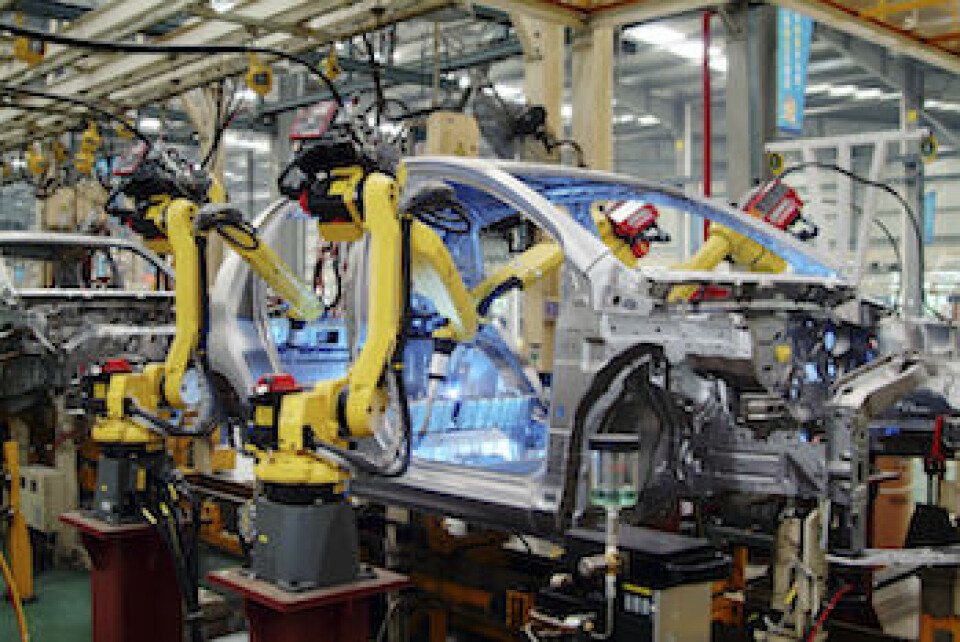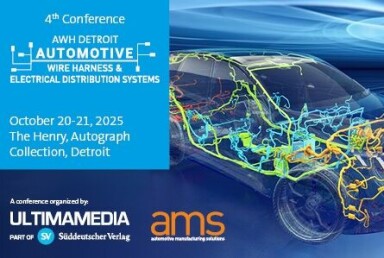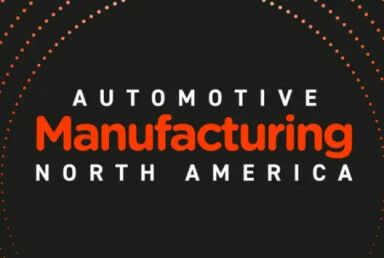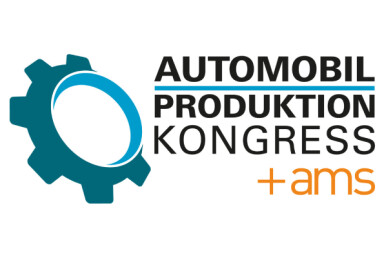Laser welding: Filling the gaps
Now well-established in automotive, laser welding continues to develop and become more widely applied 
The increased use of high-strength steels (HSS) and aluminium has added further complications to the welding process. “The biggest challenges we face are the design and material changes driven by the CAFE requirements that are driving greater fuel efficiency,” says Paul Denney, engineer and laser applications specialist at Lincoln Electric. “That means we are using higher-strength steels and aluminium alloys.
“This is more challenging than the past where we were predominantly welding carbon steels of moderate strengths. On top of that the different materials themselves are often heavily coated with zinc and either hot dipped or galvanised and that makes welding interesting.”
One option being championed by many suppliers is hybrid laser welding. “Laser welding has been around for a while now and hybrid laser welding is just another variant of welding using a laser,” adds David Park, global business segment director, automotive at Lincoln Electric.
A future for laser hybrid
So what are the opportunities for laser hybrid welding? “Laser welding has been used in the automotive sector across different areas for some time and we do quite a bit of both laser cutting and laser welding for OEMs and tier ones,” Denney explains. “We are also doing a lot of work in laser hybrid where we combine gas metal arc with laser and also with hot wire. Most of the time this is to try and get higher speed or productivity, but in some cases we are working on difficult-to-weld materials that would be a problem for arc welding.
“There are a number of barriers. Part of this is the design and specification changes. Automotive tends to be standard parts with large gaps and while you can throw liquid metal into the weld joint through the welding process, sometimes the joint configurations are such that it doesn’t buy you much. You may double the speed with laser hybrid over an arc process but when you start looking at the cost of the laser hybrid system over a tandem it is harder economically to justify.”
The case for laser hybrid The goal is to develop better and more powerful welding processes. “In joining technology the high welding speed on the one hand and the good gap bridging ability on the other hand play a significant part,” explains Herbert Staufer, Fronius International, team leader high power welding. “However, both features cannot be achieved by conventional laser welding processes. Therefore, a hybrid process is being applied, the LaserHybrid welding or also called 'LaserBrazing'.
The goal is to develop better and more powerful welding processes. “In joining technology the high welding speed on the one hand and the good gap bridging ability on the other hand play a significant part,” explains Herbert Staufer, Fronius International, team leader high power welding. “However, both features cannot be achieved by conventional laser welding processes. Therefore, a hybrid process is being applied, the LaserHybrid welding or also called 'LaserBrazing'.
"There is no doubt that the laser beam and GMA welding have been well established, allowing a wide field of application in joining technology. However, new possibilities and synergetic effects are based on the combination of both processes. The laser radiation causes a very narrow, thermally affected zone with a high ratio between welding depth and seam width.
“In the case of the laser welding process, the gap bridging ability is very low due to the small focus diameter, however, very high welding speeds can be achieved. The GMA or Tandem welding process features a significantly lower energy density, has a larger focused spot on the material surface and is characterised by its good gap bridging ability.”
A question of dollars
Once quality and repeatability have been proven, adoption of new technology in the automotive sector comes down to cost. “In one automotive industry example, we showed a reasonable, four-year amortisation on the costs incurred when adding the technology to their existing production,” says Ed Hansen, product manager at ESAB. “But if the company were to redesign the product, amortisation would take less than a year, thanks to reduced material use.”
Hybrid laser welding is particularly well suited for mass production welding at high capacity utilisation. “Depending upon the application, hybrid laser welding can be three to ten times faster than conventional processes,” Hansen adds. “The technology can lower heat input by as much as 90% and this reduces the typical macroscopic distortion. “Additionally, we’ve seen benefits in weight-sensitive applications and also significant fatigue life improvement in products exposed to cyclical loading, such as car suspensions, pressure vessels, and bridge components.”
The continued development of high-power solid-state lasers with smaller form factors, greater efficiency and lower cost has had a big effect on hybrid laser welding. “Our transition to solid-state lasers in 2001 made it feasible to apply the technology to industrial settings,” Hansen continues. “New technologies, particularly fibre delivery, let us integrate the process into conventional motion systems — robots, gantries and automation — which increased acceptance.
"Today we are seeing challenges in high-strength steels, aluminium and coated materials for both strength and fatigue life"
– David Park, Lincoln Electric
“New efficiency standards and high fuel prices are driving higher structural efficiency. Hybrid laser welding is an enabling technology for the distortion reduction, mass reduction, and high-strength alloys important in steel and aluminium vehicle construction. In one recent project, an automotive manufacturer redesigned a product for hybrid laser welding and high-strength material. It not only improved the structure’s crashworthiness; it also reduced the weight by 40%. Generally, automotive manufacturers find the cost per pound goes up when using high-strength materials, but when the overall weight drops, so does the total cost.”
Wobbling the weight off cars
Remote laser welding is well established as the automotive industry’s number one choice for joining processes. Since the laser welds spots and seams of differing geometries quickly, precisely and flexibly, flanges can be smaller, which reduces weight. But remote laser welding has always had one drawback: it cannot weld across gaps in butt joint seams as there is no way of adding filler material. But now a new wobble method is finding acceptance within the automotive sector.
This new method overcomes this problem because the laser beam does not move along the gap in a straight line; it oscillates from side to side. Moving the beam in a spiral motion melts material to the left and right of the gap and broadens the melt pool. The liquid metal replaces additional filler materials like welding wire and bridges even larger gaps. This gives developers more design freedom and helps to reduce weight. And eliminating the need for additional material saves time, too.
One of the technical requirements for laser stir welding is the presence of 3D scanner optics such as Trumpf’s second-generation PFO 3D. The wobble remote welding process can be programmed via the focusing optics. Two internal mirrors position the laser beam along the X and Y-axes. A moveable lens located between the collimator and the first scanner mirror also focuses the beam along the Z-axis, providing even more freedom of movement. This flexibility allows wobble geometries to be executed on any part of the component, even on angled sections, as the small lens can position the focal point in three dimensions wherever it is needed.
The new remote method is being well received by the automotive industry – hardly surprising, as it is fast, precise, saves on filler material and yet still requires less seam preparation. Tests showed that the speed of the wobble effect (the speed at which the laser beam stirs the melt pool for a given feed rate) affects the bridgeability of the gap; the slower the wobble speed, the less weld seams collapse and undercut occurs, while increasing bridgeability for every sheet thickness tested. Varying the wobble geometry by changing the widths of the circles, on the other hand, was found to make no difference.
As far as Volkswagen is concerned, the process has already proven its suitability for series production. “The wobble method means we can now bridge larger gaps than we could before,” states Thorge Hammer, who is responsible for technology planning and development, bodyshop planning and tool and die operations at VW. “This also means we’re able to process components designed for MIG and MAG welding with no need for adjustments.”
Previously, gaps of 0.2mm were the largest that could be welded. “These days we weld mounting blocks with gaps of up to 0.5mm,” Hammer adds. The company uses the new technology to join sub-assemblies such as seat supports and mounting blocks for the Golf engine and powertrain. The seat supports are made from 0.7mm, deep-drawn medium-strength sheet steel. To create the mounting blocks, Volkswagen welds a 3mm, flow-formed sheet into a 3mm-thick shell. “The ability to move in the third dimension allows us to laser weld components with undercuts,” says Hammer.
The carmaker already sees the potential of the method for use in manufacturing other gear components. Initial tests are underway and will again focus on determining how to use the wobble method efficiently to produce these components. The next big challenge facing the automotive industry is finding suitable applications.
Induction meets laser
Many successful welding processes today make use of induction, particularly in applications that call for pre-heating. The minimal heat input of the laser has a downside when it comes to deep penetration welding of high-carbon steels. The cold work-piece chills the welding seam, and this can lead to hardening and quality defects such as cracks in the zone affected by the heat. Conventionally, pre-warming has meant heating an entire component in a furnace. With the inductor, however, the heat is generated in a matter of seconds on a very limited area.
“At first glance, using induction in laser processing isn’t always an obvious choice,” says Georg Schneider, induction sales representative, at the Trumpf subsidiary Hüttinger Elektronik. “But while user-programmable lasers remove the limitations of mechanical processes, the pyrometer-controlled induction systems replace conventional heating systems such as furnaces and put thermal processes exactly where they belong. In powertrains, for instance, they are located directly at the welding joint.”
The automotive industry is now discovering that this can be useful, both to make welding joints possible and to actively influence how high-strength body parts deform in the event of a crash. While these parts need to be rigid, the steel must not break if a crash occurs. Energy is dissipated only if the part deforms. For this reason, manufacturers are beginning to soften up the areas that are at risk of breaking in a crash, with the aim of increasing their ductility in defined areas. Once again, this takes place directly in the laser processing cell, where the laser perforates and trims the pressed and hardened component. Once this is done, inductors soften the areas that bend in the event of a crash.

The way ahead
“We are in the early stages of the next vehicle development and it’s about trying to solve the challenges to bring efficiency, cost-effectively,” Park adds. “That remains a challenge for us all and brings challenges in joining materials of all different sorts. Today we are seeing challenges in high-strength steels, aluminium and coated materials for both strength and fatigue life.
“The challenges come from both sides. In terms of welding technology, we focus on many other industries aside from automotive. Our R&D departments are always pushing the envelope, looking for commonalties to transfer that technology over to other industries. What we are doing is both reactive and proactive. The new materials are a good example of reactive where we have to respond with new technologies and welding wires. At the same time we are working on new technologies.
"What if tomorrow we could actually weld aluminium to steel?" Now that is something that would really open up a step-change for automotive designers; a technology that would offer opportunities which did not exist before. With the amount of R&D taking place in the welding sector, don’t bet against it making an appearance in the near future.


